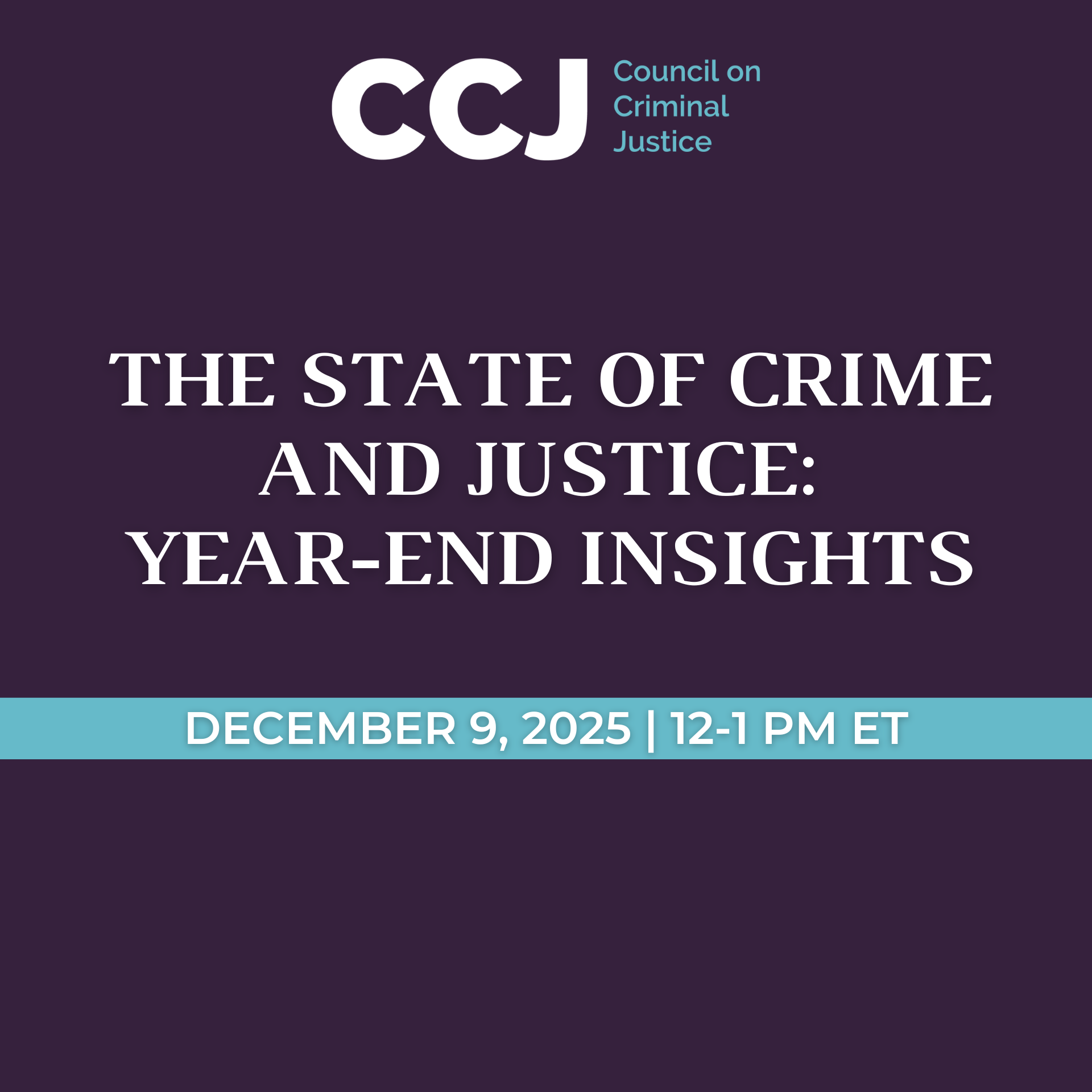Between their fourth and fifth meetings, working group members divided into two subgroups. One focused on ways to improve the usability of the Federal Bureau of Investigation’s (FBI) Crime Data Explorer (CDE), an interactive tool designed to provide crime trends data to policymakers, law enforcement, and the public. The second subgroup held a series of conversations with state and local government stakeholders from seven states to better understand the challenges posed by the transition to the National-Incident Based Reporting System (NIBRS).
At its the fifth meeting, the Working Group heard reports from the two subgroups and discussed recommendations for improving capacity to produce timely, accurate, complete, and usable crime trends data.
Improving the Usability of the FBI's Crime Data Explorer
The subgroup on usability identified five guiding principles for improving a crime trend data system such as the CDE:
- Data should be timely.
- Data should be accurate.
- Data should be complete.
- The data generation process, and its limitations, should be transparent.
- Data should be accessible to all user groups.
Using these principles, subgroup members proposed that any data system designed to monitor crime trends should include elements such as a detailed user how-to guide, a clickable table of contents, and explicit notes associated with each data table and source that address data quality and flag potential inaccuracies. Members also discussed the need for a including law enforcement officials, policymakers, and other consumers of crime trend data to identify challenges with the usability and accessibility of the CDE. The subgroup emphasized the inherent complexity of national crime trend data, especially given the recent transition from the Uniform Crime Reporting’s (UCR) Summary Reporting System (SRS) to NIBRS. As such, those who create and oversee a crime trend data system such as the CDE must prioritize system elements that carefully guide users through the data.
Accelerating the Adoption and Sustainability of NIBRS
The second subgroup’s objective was to better understand why some states continue to struggle with the transition from SRS to NIBRS. CCJ staff and subgroup members met with the executive committee of the Association of State Uniform Crime Reporting Programs as well as crime data leaders, UCR program managers, and local law enforcement liaisons from seven states diverse in geography, population size, and law enforcement composition. Nine key themes emerged from the conversations, summarized below and detailed here.
- Federal support for the transition to NIBRS has played a key role in helping states navigate the change, but it has not been large enough to encourage the biggest local law enforcement agencies to move more quickly.
- State UCR programs – and the parts of local law enforcement agencies that deal with data – are understaffed.
- Data integrity is a major challenge. NIBRS captures significantly more data than UCR’s SRS, requiring significantly more work from police officers and introducing new opportunities for incomplete reporting and/or mistakes. Data quality assessments are increasingly critical, yet resource constraints limit states’ abilities to conduct necessary data quality assessments or establish systems for review before the data are sent to the FBI.
- Record Management Systems continue to be an obstacle to adoption and adaptation.
- Many police chiefs see few tangible and immediate benefits in reporting to NIBRS or believe that the costs of transitioning to the new system outweigh the benefits.
- The FBI and state agencies that collect crime data from local law enforcement need to publish and share crime trends information much more quickly. Local law enforcement agencies should be able to see how their crime trends compare to neighboring or peer cities in a timely fashion.
- There is tension between accelerating the adoption of NIBRS and improving NIBRS. The FBI’s Criminal Justice Information Services Advisory Policy Board has identified approximately 30 improvements that should be made to NIBRS; however, these changes have not yet been added to any of the FBI’s publicly available user manuals or instructional guides. The focus should be applying these changes and pausing further updates until agencies have implemented NIBRS and the 30+ changes that have already been approved by the board.
- Transitioning from SRS to NIBRS will result in higher crime numbers because SRS does not include lesser offenses that occurred as part of the same event. Authorities would need to explain this increase to the public.
- State UCR program representatives expressed strong support for state mandates requiring local law enforcement to report incident-based crime data to the states in a timely fashion.
Working group members discussed which issues within these themes may be most responsible for states’ inability to meet the 2021 deadline to transition from SRS to NIBRS.
Several members emphasized the issue of capacity for both small and large law enforcement agencies. Many, if not most, agencies have a limited number of people who are adept at technology systems, and staffing for NIBRS reporting is not typically a priority. Members also agreed that many local law enforcement agencies often do not have the funding and staff support to replace an RMS with one that is NIBRS-compliant.
In addition, some members said inadequate messaging about the importance of transitioning to NIBRS had impeded progress. Many police chiefs likely do not see the value in reporting to NIBRS and therefore did not make the adoption of the system a priority. One member, however, suggested that this assumption of resistance among police chiefs is misguided. Rather, police chiefs have long wanted a better reporting system and were a significant impetus for NIBRS. Overall, members agreed that better messaging is needed to demonstrate how NIBRS reporting benefits state and local governments, criminologists, policymakers, the media, and the public.



